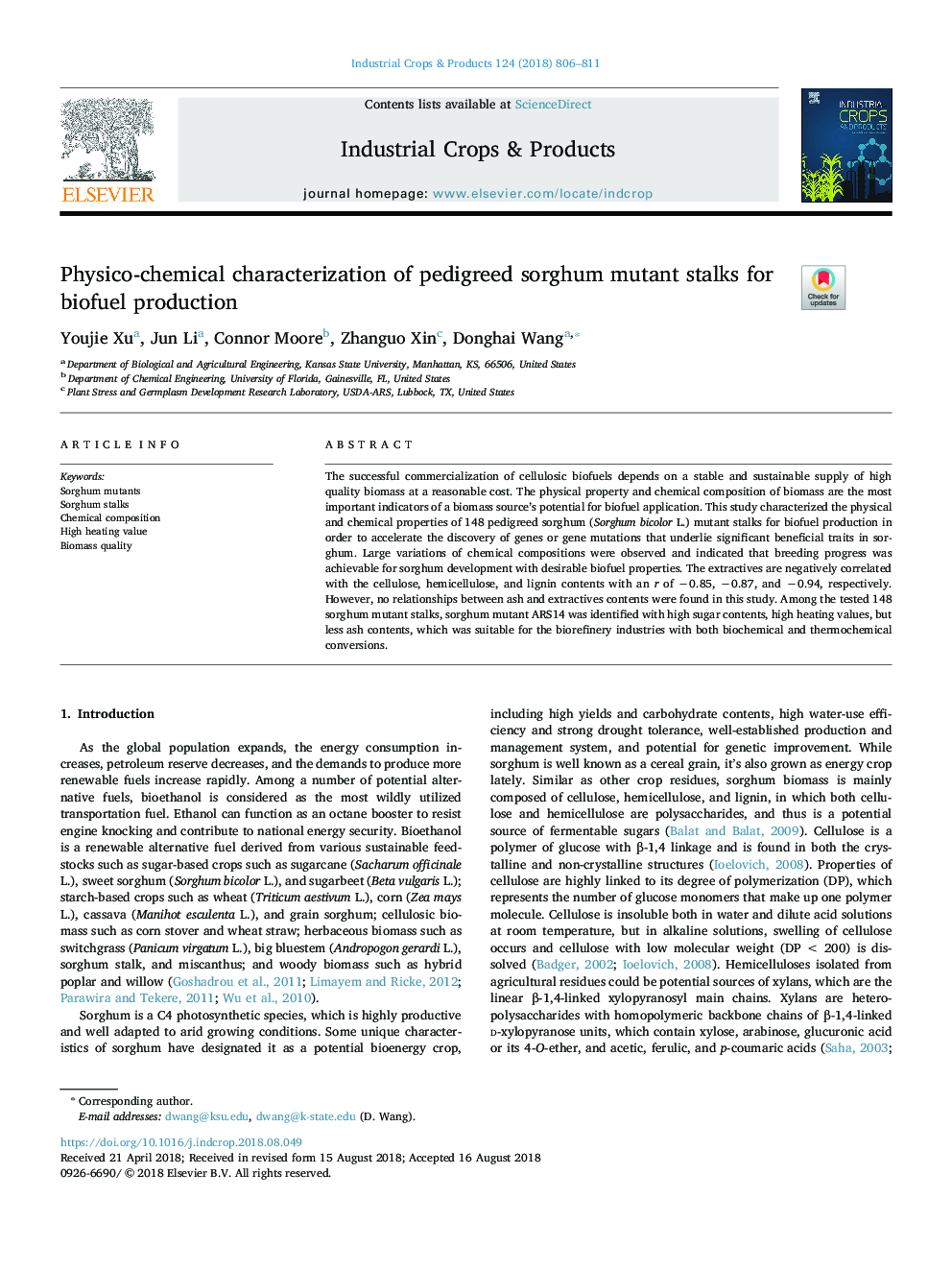| Article ID | Journal | Published Year | Pages | File Type |
|---|---|---|---|---|
| 10116981 | Industrial Crops and Products | 2018 | 6 Pages |
Abstract
The successful commercialization of cellulosic biofuels depends on a stable and sustainable supply of high quality biomass at a reasonable cost. The physical property and chemical composition of biomass are the most important indicators of a biomass source's potential for biofuel application. This study characterized the physical and chemical properties of 148 pedigreed sorghum (Sorghum bicolor L.) mutant stalks for biofuel production in order to accelerate the discovery of genes or gene mutations that underlie significant beneficial traits in sorghum. Large variations of chemical compositions were observed and indicated that breeding progress was achievable for sorghum development with desirable biofuel properties. The extractives are negatively correlated with the cellulose, hemicellulose, and lignin contents with an r of â0.85, â0.87, and â0.94, respectively. However, no relationships between ash and extractives contents were found in this study. Among the tested 148 sorghum mutant stalks, sorghum mutant ARS14 was identified with high sugar contents, high heating values, but less ash contents, which was suitable for the biorefinery industries with both biochemical and thermochemical conversions.
Related Topics
Life Sciences
Agricultural and Biological Sciences
Agronomy and Crop Science
Authors
Youjie Xu, Jun Li, Connor Moore, Zhanguo Xin, Donghai Wang,
